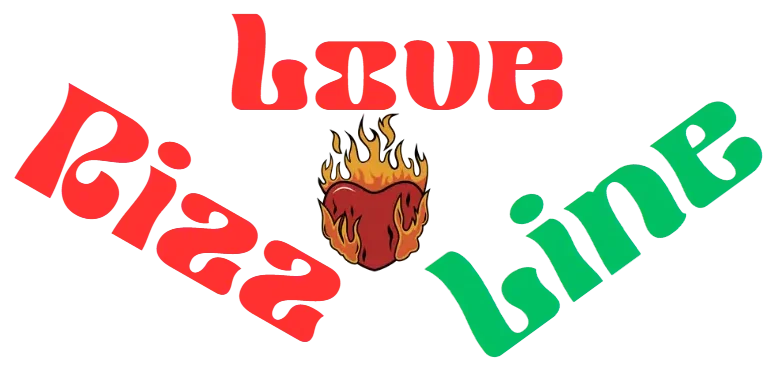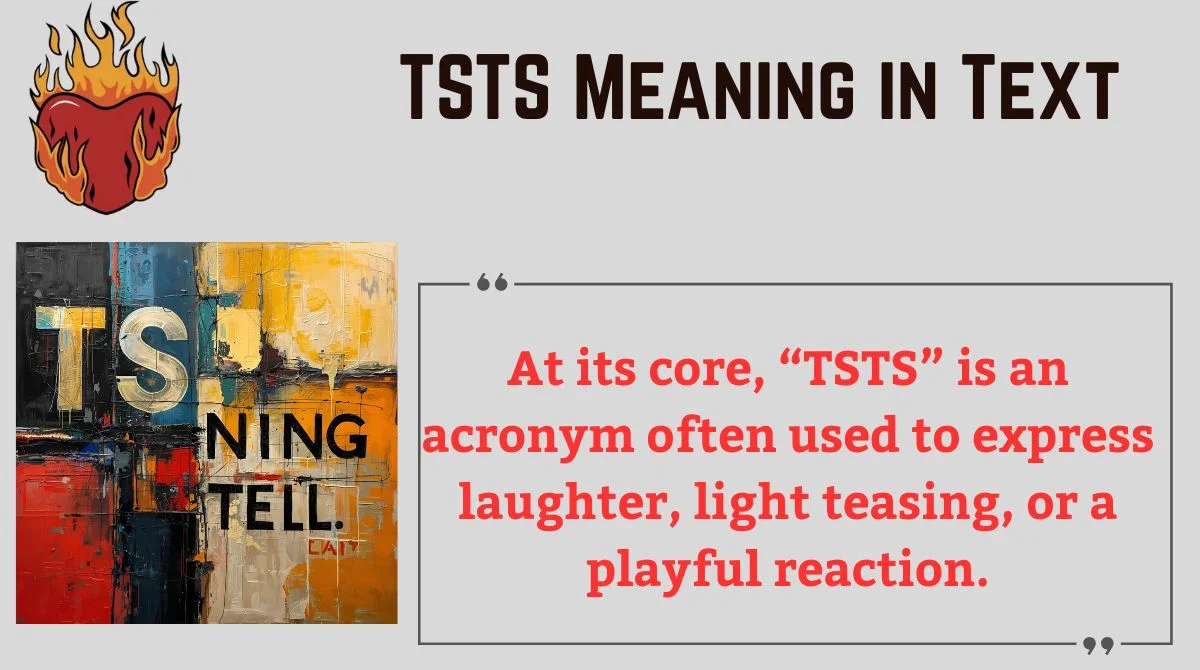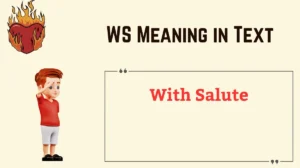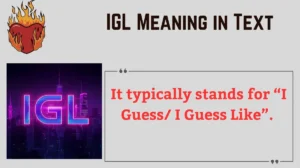Texting slang moves fast. Blink, and you might miss the latest acronym that’s lighting up group chats, dating apps, and online communities. One of those buzzwords? “TSTS.”
If you’ve seen someone drop “TSTS” in a message and felt a little lost, you’re not alone. This guide breaks it down in plain language—no fluff, no confusing jargon.
By the end, you’ll know exactly what TSTS means in text, how to use it, when not to use it, and what hidden meanings to watch for.
Let’s dive right in.
🧭 What “TSTS” Really Means in Text
At its core, “TSTS” is an acronym often used to express laughter, light teasing, or a playful reaction.
It’s a casual expression—something people drop in conversations when they want to show amusement or emphasize a cheeky tone.
Here’s a quick example:
Friend A: “I can’t believe I tripped twice today.”
Friend B: “TSTS 😂”
It’s not exactly a “word,” but rather a tone-setter—like “haha,” “lmao,” or “smh.”
✅ Quick facts about TSTS:
- Type: Acronym / Internet slang
- Tone: Playful, teasing, or amused
- Common platforms: Text messaging, Instagram DMs, TikTok comments, dating apps, and group chats
- Typical vibe: Lighthearted, not aggressive
🕰️ Origin & Evolution of the Term
Like most modern slang, “TSTS” didn’t just appear overnight.
It started popping up in early 2010s chatrooms and instant messaging spaces as a sound-based expression—an imitation of a tongue-click or playful tisking noise people make in real life when gently teasing someone. Over time, users began typing it out as “tsts,” and it stuck.
Key stages of its evolution:
| Time Period | How It Was Used | Platform |
|---|---|---|
| 2010–2013 | Sound imitation in niche forums | IRC chats, online gaming |
| 2014–2018 | Informal texting slang | WhatsApp, Snapchat |
| 2019–2022 | Meme & reaction shorthand | Instagram, Twitter |
| 2023–2025 | Mainstream expression | TikTok, dating apps, comment sections |
Why it spread fast: It’s short, punchy, easy to type, and feels natural in casual conversations. Think of it like a verbal shrug mixed with a smirk.
💬 How “TSTS” Is Used in Different Contexts
“TSTS” doesn’t mean the same thing everywhere. Its tone depends on where and how it’s used.
Common use cases:
- Casual texting
- “Tsts, you’re always late 😏” → playful teasing.
- Group chats
- Used to react to a friend’s embarrassing but funny story.
- Dating apps
- Light flirting. It softens the tone, making jokes feel less harsh.
- Social media comments
- Often paired with emojis to show amusement or mock surprise.
Tone tip: If someone sends you “tsts” with a 😉 or 😂 emoji, it usually means they’re joking around, not being mean.
🧠 Common Misunderstandings
Because it’s not as mainstream as “LOL” or “BRB,” TSTS can confuse people who aren’t familiar with it.
Here are some common mix-ups:
| Misunderstanding | Why It Happens | Actual Meaning |
|---|---|---|
| Thinking it’s a typo | It looks repetitive | It’s intentional |
| Confusing it with a sound like “psst” | Similar rhythm | Not a whisper |
| Taking it as mockery | Misreading tone | It’s playful, not mean |
| Overanalyzing | Lack of context | Usually harmless banter |
Pro tip: Always check the surrounding message and emoji to understand the real tone.
🔄 Similar Acronyms & Alternatives
“TSTS” isn’t the only way people express teasing or amused reactions. If you’re unsure, here are some similar slang terms and their differences:
| Term | Meaning | Tone | When to Use |
|---|---|---|---|
| “LOL” | Laugh out loud | Neutral | When something’s funny |
| “SMH” | Shaking my head | Mild disapproval | When someone does something silly |
| “Tsk tsk” | Gentle scolding | Teasing | When playfully judging |
| “Bruh” | Surprise / disbelief | Casual | With friends |
| “Sksksk” | Excitement or mock shock | Light | Mostly Gen Z slang |
👉 “TSTS” fits somewhere between “tsk tsk” and “LOL”—a blend of teasing and laughing.
🗨️ How to Respond When Someone Sends “TSTS”
The right response depends on the tone of the conversation.
Here are some go-to reply ideas:
- Playful comeback:
- “Tsts, you love teasing me 😂”
- “You caught me 😅”
- Flirty response (for dating apps):
- “Tsts, you think you’re funny huh 😉”
- “Haha you got me there 😎”
- Neutral response (for friends):
- “Hey, don’t tsts me 😆”
- “Alright, alright… fair point.”
Golden rule: If their “tsts” feels playful, reply with equal energy. If it seems mocking (rare but possible), you can deflect or clarify.
🌍 Regional or Cultural Nuances
Interestingly, “TSTS” shows up more in some communities than others.
- Europe & Latin America: The expression mirrors real-life tongue-clicking sounds used in teasing or mock disapproval.
- U.S. & Canada: More of a playful, meme-like reaction in chats.
- Asia: Less common but understood among heavy social media users.
Example: In some European cultures, a “tst tst” sound can mean “naughty” or “you’re in trouble—but in a funny way.” Online, this translates to friendly teasing, not actual criticism.
Cultural context matters. A “tsts” from a friend in Brazil might carry a slightly flirtier tone than one from a classmate in Canada.
🧑💻 Online Communities & Dating App Usage
Some slang lives and dies in small circles, but “TSTS” thrives in specific online spaces.
Where it’s popular:
- Dating apps: Used for gentle teasing or flirting.
- TikTok comment sections: Often paired with emojis to mock-playfully judge something.
- Gaming chats: Used to roast friends lightheartedly.
- Group DMs: Common among friend groups for inside jokes.
Why it works so well online:
- It softens teasing, making jokes feel fun—not mean.
- It’s short, so it fits fast-moving chat environments.
- It’s less overused than “LOL,” so it feels fresh.
⚠️ Hidden or Inappropriate Meanings to Watch For
While “TSTS” is usually harmless, context can twist its meaning.
- In some niche or NSFW spaces, “TSTS” has alternative interpretations, often unrelated to its mainstream use.
- A sarcastic tone or lack of emojis can make it sound passive-aggressive.
- Used repeatedly, it might feel like mockery.
Case study:
Alex received a message from a friend: “Tsts. Again?”
At first, it felt like a joke. But no emoji, no follow-up. Alex took it as criticism. A quick clarification turned it into a laugh—but it shows how tone can shift fast.
✅ Rule of thumb: If unsure, ask. If you’re using it, add emojis or other cues to show you’re joking.
🏢 Should You Use “TSTS” in Professional Settings?
Short answer: Probably not.
“TSTS” belongs to casual, informal spaces, not workplace chats or client emails. It can be:
- Misread as disrespectful
- Seen as unprofessional
- Confusing to people outside your circle
Better professional alternatives:
| Instead of “TSTS” | Say This | Why It Works |
|---|---|---|
| “Tsts, really?” | “Oh, that’s interesting 😄” | Friendly but clear |
| “Tsts 😂” | “Haha, good one!” | Keeps tone light |
| “Tsts 🙄” | “I see what you did there.” | Adds clarity |
Keep slang for off-the-clock conversations. It’s better to be clear than clever in professional communication.
❓ Frequently Asked Questions
What does TSTS mean in text?
It’s a slang acronym used to playfully tease or express light amusement. Think of it like a digital tongue click.
Is TSTS offensive?
No, not typically. But like any slang, it depends on context. Without emojis, it can sound sarcastic.
Can I use TSTS at work?
Not recommended. It’s too informal for professional environments.
Is TSTS the same as tsk tsk?
They’re related but not identical. “TSTS” is more playful, while “tsk tsk” can sound slightly more judgmental.
How should I reply when someone sends TSTS?
Mirror the tone. If it’s light and playful, tease back. If unsure, keep your response neutral or ask for clarity.
📝 Final Thoughts
“TSTS” might look confusing at first glance, but it’s really just modern shorthand for light teasing.
- It’s not aggressive.
- It’s all about tone.
- It’s most common in casual digital spaces like dating apps, social media, and DMs.
Remember: slang isn’t universal. What feels funny to one person might sound sharp to another. Use it wisely, and always read the room—or in this case, the chat.
Quote to remember: “Slang is the soul of casual conversation—it makes language playful, but only when used with care.”

Mark Peter is the creative mind behind RizzleLineLove.com, your go-to hub for witty, flirty, and downright hilarious pick-up lines. With a passion for blending humor and charm, Mark crafts content that sparks conversations, breaks the ice, and adds a playful twist to everyday moments.
Whether you’re looking to impress your crush, make your friends laugh, or spice up your social media captions, his work is all about helping you connect — one clever line at a time.



